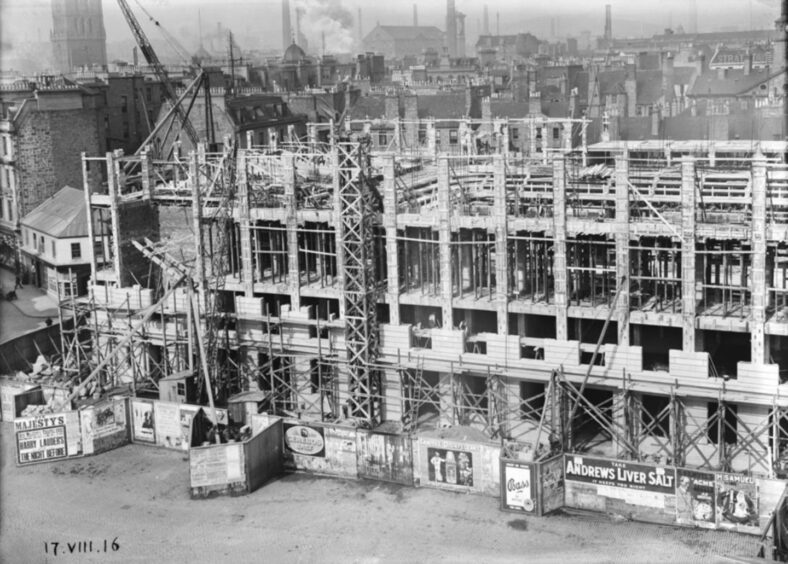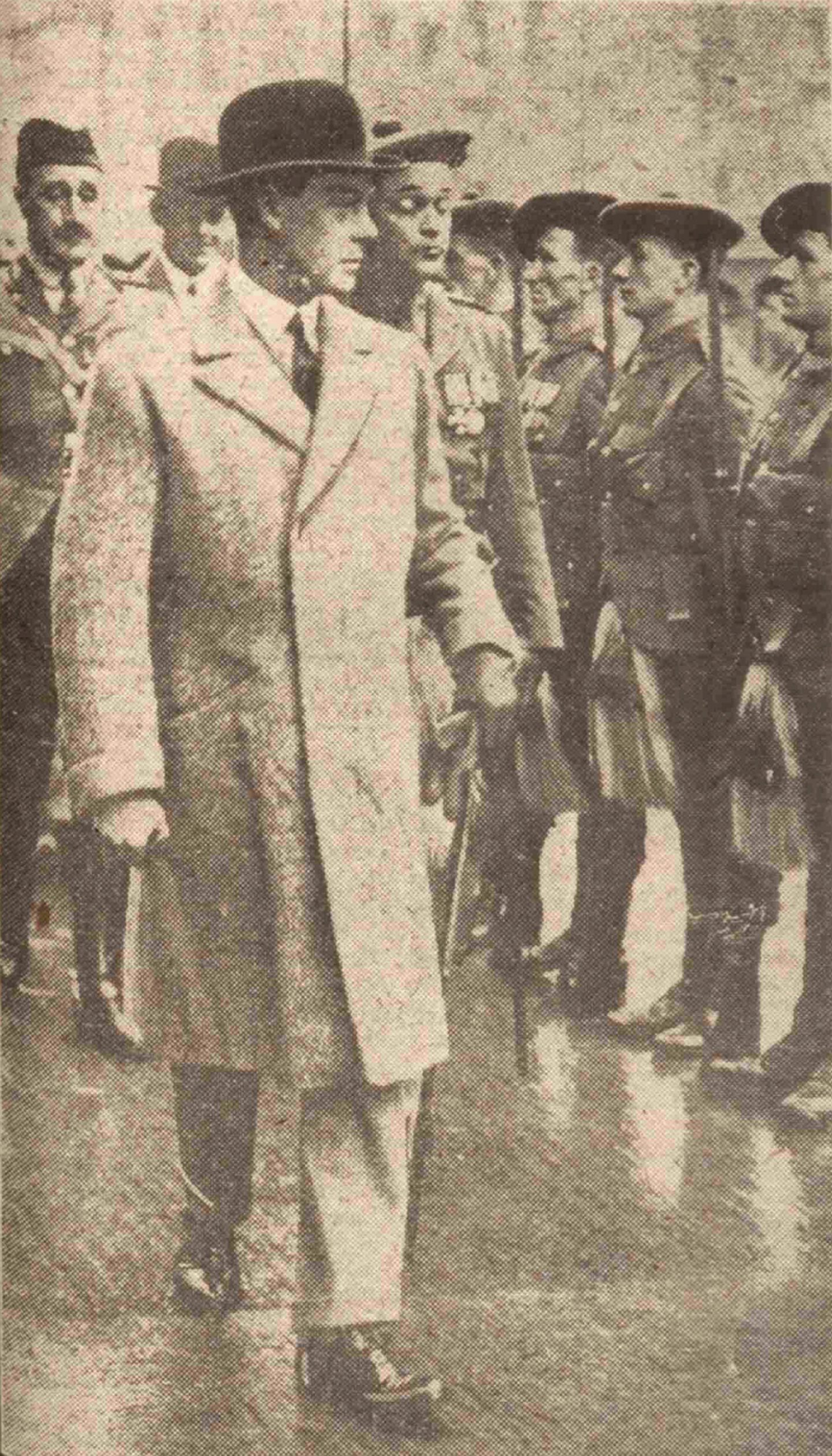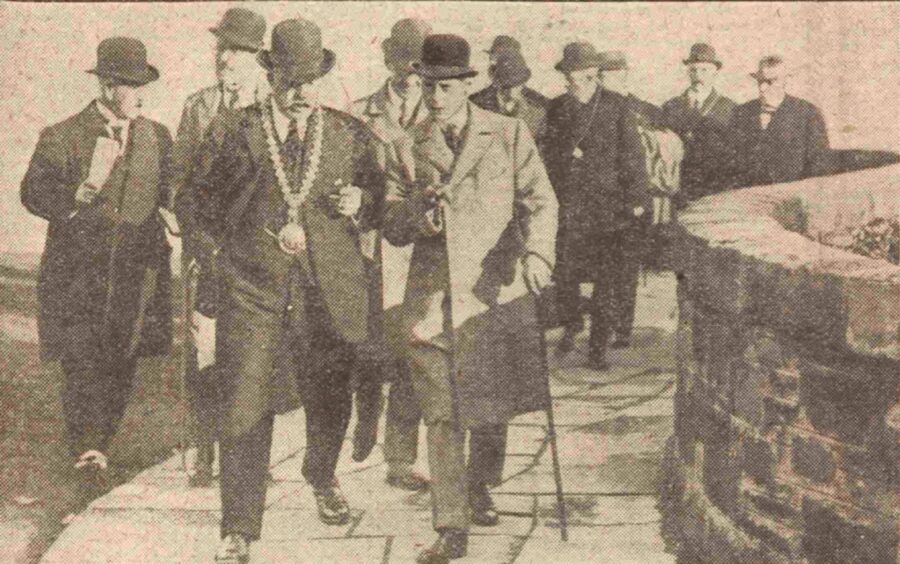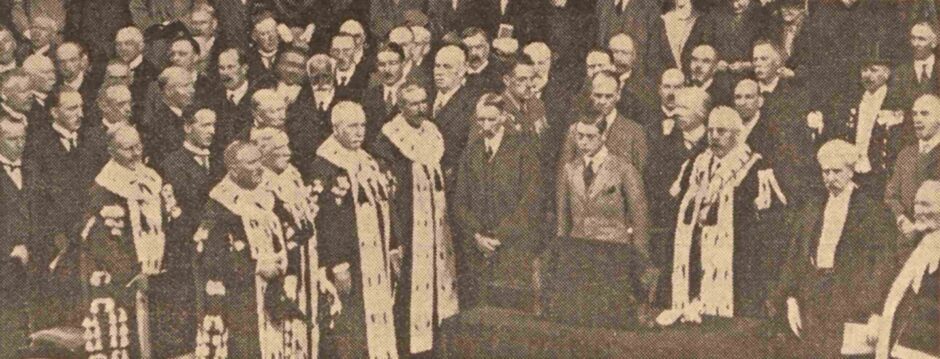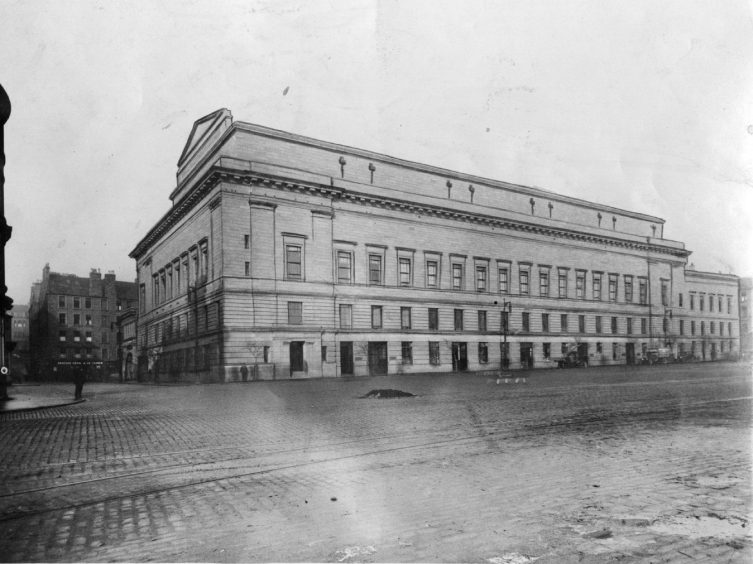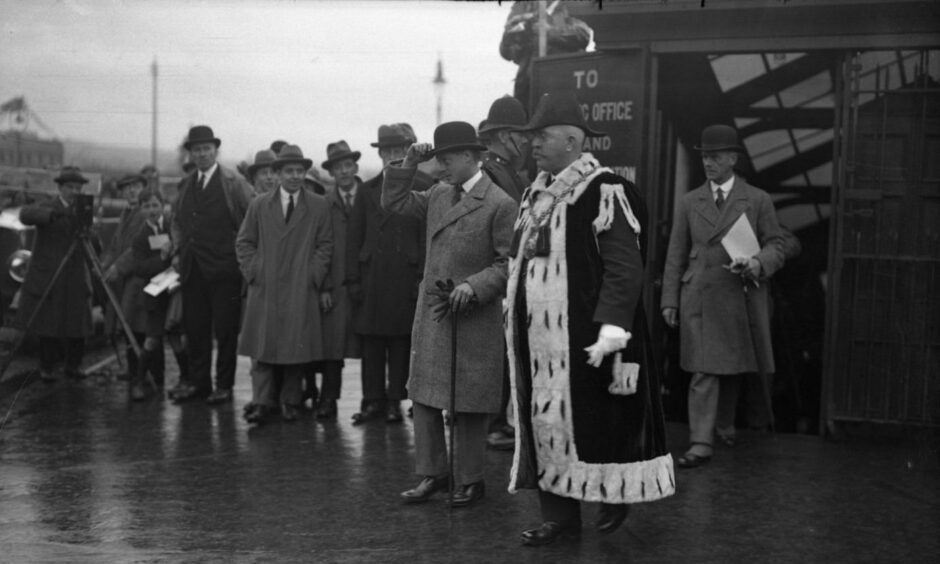
It was up with the bonnets o’ Bonnie Dundee when the Caird Hall was officially opened by Edward VIII exactly 100 years ago today.
Some 3,300 people heartily sung the decades-old folk tune during a “rousing welcome” which was afforded to the Prince of Wales at the ceremony on October 26 1923.
The Courier said Edward was “looking tanned and well” after his ranching holiday in Canada when he arrived by train at Tay Bridge Station on his first visit to Dundee.
Edward was just the man for the job.
He was blessed with the common touch and his charm, charisma and good looks helped him attain a celebrity status more associated with Hollywood than monarchy.
The moments of waiting prior to the arrival of the distinguished party were passed by listening to the Caird Hall organ being played by William Peddie Petrie.
The entire gathering stood up when Edward appeared on the stage platform and they “lustily sung” while Bonnie Dundee was played by the organist.
The organ, one of Dundee’s cultural jewels, was designed by eminent Edinburgh-based organist Alfred Hollins and installed by Harrison & Harrison of Durham.
A brief history of the Caird Hall
The Courier said the “scene inside the great Caird pile” was “unforgettable”.
Lord Provost Alexander Spence delivered a brief introduction to the 3,300 guests and said the great need for a public hall of sufficient size had long been recognised.
Sir James Caird, who amassed a fortune through the jute trade, “solved the problem” when he donated £100,000 for the new city hall and council chamber in April 1914.
The Caird Hall was built on a site between the Town House and the docks, resulting in the clearance of the medieval slum of St Clement’s Lane and an area called the Vault.
The foundation stone was laid by King George V and Queen Mary in 1914 by electric press button control from Caird’s Ashton Works in the Hawkhill.
Sadly, Caird died in 1916 and did not live to see the building finished, with work coming to a halt because of the First World War.
His sister, Grace Marryat, donated £75,000 to allow its completion, which permitted the construction of the façade, a colonnade of ten massive Doric columns.
She also gave the Marryat Hall, attached to the west.
Mr Spence said: “It is interesting to note that during its progress and up to and since the date of completion Mrs Marryat has taken the same kindly interest in the progress that her brother had manifested in his life, and now Dundee is in possession of what I believe is one of the finest halls – if not the finest provincial hall in Britain.
“It can accommodate 3,300 persons comfortably seated in armchairs.
“It is beautiful in design and appropriately equipped.
“The system of heating and ventilation is perfect; above all, it has been adjudged by competent critics to be a triumph in acoustics, a result you will agree, I am sure, reflecting great credit to the professional skill of our city architect, Mr James Thomson.”
The huge cheering suggested they did.
A tremendous welcome for Edward
The Caird Hall was formally opened by Edward after the Town Clerk read the city’s address of welcome which was then enclosed in a gold casket and given to him.
But all these cheers throughout were dwarfed by the tremendous ovation for Edward who said he was “deeply grateful” for the “unmistakably cordial welcome”.
He said: “The ceremony which I have just had the privilege of performing is, of course, the chief reason for my visit, and it is in itself a sufficient one.
“The opening of so fine a public building as that in which we now stand is an event of importance to the city and to all who are interested in its welfare.
“The generosity of one of your best-known citizens made its inception possible, and the generosity of a member of his family has ensured its completion.
“Dundee has honoured me in asking me to associate myself with it today, and of that honour I am sincerely appreciative.
“I am glad that my visit to Dundee will not be limited only to the ceremony we are concluding, and that time will permit of my extending it to other parts of the city.”
Flags fluttered from the windows of almost every household during the “triumphal procession” which included visits to Ashton Works and Dundee Royal Infirmary.
The Courier said “unparalleled scenes of enthusiasm were witnessed” along the route and Edward was “deeply touched” by the “magnificence of his reception”.
“It is safe to say that no city or town in Scotland – or even in the United Kingdom – has ever accorded a royal visitor a more affectionate and thunderous welcome.
“The cheering was unremitting and unrestrained.”
The Courier said Edward “won his way straight to the hearts” of scores of thousands “who acclaimed him as no visitor to Dundee has ever been acclaimed before”.
Prince of Wales overwhelmed by the reception
Edward left Dundee for Glamis Castle following the visit and showed his appreciation of the overwhelming welcome he received in a special message given to the Lord Provost.
“I am absolutely delighted with my reception,” he said.
“I have never enjoyed myself better anywhere.
“There has not been a single discordant note and I shall certainly pay a return visit to Dundee.”
Work on the open square area began after the Caird Hall was complete.
Back then the square was filled with one of the biggest slums in Scotland which desperately needed to be demolished to give Dundee a central plaza.
First the east wing of the new City Square was constructed.
Finally, in 1933, the west wing was opened up, which involved the controversial demolition of the William Adam-designed Town House, known as The Pillars, which dated back to 1734.
The official souvenir programme to the opening of the new City Square in 1933 said there was “no doubt” the development “opened up a portion of the area that was to say the least of it, tumbledown and gives a new setting to the Caird Hall”.
As well as hosting events and conferences for 100 years, the Caird Hall has played host to some of music’s most famous faces including The Beatles, David Bowie and Queen, and even, in contemporary times, serving as a vaccination centre in the age of Covid-19.
The Caird Hall has become an iconic part of the city’s landscape since 1923 with stonework and architectural detail so magnificent it can take your breath away.
Even today, after 100 years, it remains a venue fit for royalty.
